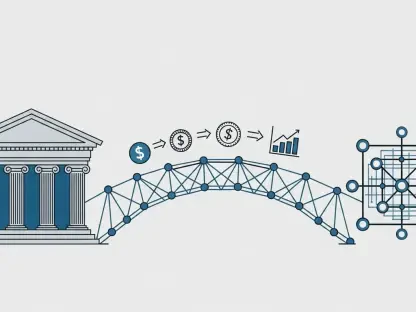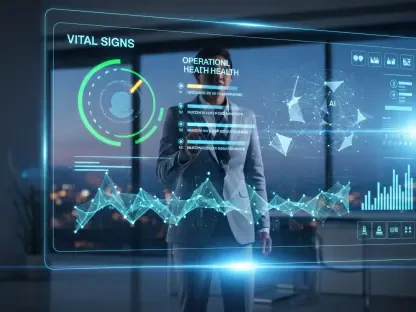I’m thrilled to sit down with Kofi Ndaikate, a renowned expert in the fintech space, whose deep knowledge of global payments infrastructure, blockchain, cryptocurrency, and regulatory landscapes offers invaluable insights. Today, we’re diving into the remarkable journey of a UK-founded global payments firm that recently secured a significant funding round. Our conversation explores the intricacies of cross-border transactions, the impact of innovative technologies like AI and stablecoins, and the strategies behind scaling a fintech business in a competitive market. Join us as we unpack the challenges, opportunities, and future vision of this dynamic industry.
How did you first become involved in the fintech industry, and what excites you most about the evolution of global payments infrastructure?
My journey into fintech started over a decade ago when I saw how technology could transform traditional financial systems. I was fascinated by the potential to make money move faster and more securely across borders. What excites me most today is the pace of innovation—whether it’s blockchain reducing transaction costs or AI optimizing payment routes. The global payments space is at a turning point, breaking down barriers that have long frustrated businesses and consumers alike. Every day, we’re seeing solutions that make the world feel smaller and more connected.
Can you walk us through the core mission of a global payments provider and how it supports businesses in navigating cross-border transactions?
At its heart, a global payments provider aims to simplify the complex web of international money movement. This means offering solutions like merchant acquiring, payouts, and card issuance that work seamlessly across different countries and currencies. For businesses, especially in e-commerce or gaming, this translates to being able to accept payments from customers worldwide without worrying about exchange rates or regulatory hurdles. It’s about creating a frictionless experience so companies can focus on growth rather than logistics.
What does a major funding milestone, like raising $10 million at a near $200 million valuation, signify for a fintech company in today’s market?
It’s a huge vote of confidence, especially in a tough economic climate. A milestone like this shows that investors believe in the company’s vision and its ability to execute. It’s not just about the money—it’s about validation of the business model and the potential for scale. For a fintech firm, this kind of capital injection often means the ability to expand into new markets, invest in cutting-edge tech, and stay ahead of competitors. It’s a signal that the company is on a path to redefine how cross-border payments are done.
How important is repeated investor backing in building momentum for a payments infrastructure business?
Repeated backing from investors is incredibly significant. It’s a sign that those who’ve been with the company from early stages still see untapped potential and trust the leadership to deliver. Beyond the financial support, these investors often bring strategic guidance, industry connections, and credibility that can open doors. It’s like having a stamp of approval that reassures other stakeholders—be it clients or future partners—that this is a business worth betting on.
Building a network that spans over 170 payment methods across 110 currencies sounds incredibly complex. What are some of the biggest hurdles in creating such a vast system?
It’s a monumental task, no doubt. One of the biggest hurdles is navigating the regulatory landscape—each country has its own rules, compliance requirements, and restrictions on money movement. Then there’s the technical challenge of integrating diverse payment systems, from mobile wallets to traditional bank transfers, while ensuring security and reliability. Cultural differences in payment preferences also play a role; what works in one region might flop in another. Overcoming these requires a mix of local expertise, robust tech, and a lot of patience.
With a global presence through multiple offices, how does having a distributed team enhance the ability to serve clients worldwide?
Having offices across different regions is a game-changer. It means you’ve got boots on the ground who understand local markets, speak the language, and can respond to client needs in real time. It also helps in building relationships with local regulators and partners, which is critical for smooth operations. A distributed team brings diverse perspectives to problem-solving and ensures you’re not just reacting to issues after hours but proactively addressing them as they arise in each time zone.
When we talk about improving payment infrastructure with new capital, what kind of advancements should businesses expect to see?
Improving infrastructure often means making transactions faster, cheaper, and more transparent. This could involve upgrading backend systems to handle higher volumes with less latency or integrating new technologies that reduce processing fees. For businesses, the end result is a smoother experience—think near-instant payouts or real-time tracking of cross-border payments. It’s also about scalability, ensuring the system can support growth as more clients come on board without hiccups.
There’s a lot of buzz around new offerings like stablecoin payments. Can you explain why this is becoming a key focus in the payments industry?
Stablecoins are digital currencies pegged to stable assets like the US dollar, which means they offer the benefits of cryptocurrency—speed and low cost—without the wild price swings. In cross-border payments, they’re a game-changer because they can bypass traditional banking systems, cutting down on fees and delays. They’re particularly appealing for businesses in volatile economies or regions with limited access to global financial networks. As trust and regulation around stablecoins grow, they’re poised to become a mainstream option.
How do you see AI-driven solutions reshaping the future of cross-border transactions?
AI is already transforming payments by optimizing everything from fraud detection to currency conversion rates. It can analyze vast amounts of data to predict and prevent issues before they happen, like flagging suspicious transactions in real time. AI also personalizes payment experiences, routing transactions through the most cost-effective paths. Looking ahead, I think we’ll see AI automating even more complex decisions, reducing human error, and making international payments as seamless as sending a text message.
What is your forecast for the future of global payments infrastructure over the next decade?
I believe we’re heading toward a world where cross-border payments are almost invisible to the end user— instantaneous, low-cost, and fully integrated into everyday business operations. Technologies like blockchain and AI will drive this by eliminating intermediaries and inefficiencies. We’ll also see greater inclusion, with unbanked populations gaining access through mobile and digital solutions. Regulation will catch up, hopefully fostering innovation rather than stifling it. It’s an exciting time, and I think companies that prioritize adaptability and customer-centric solutions will lead the charge.









